SpaceX Starship prototype is now ready for the most eagerly anticipated tests.
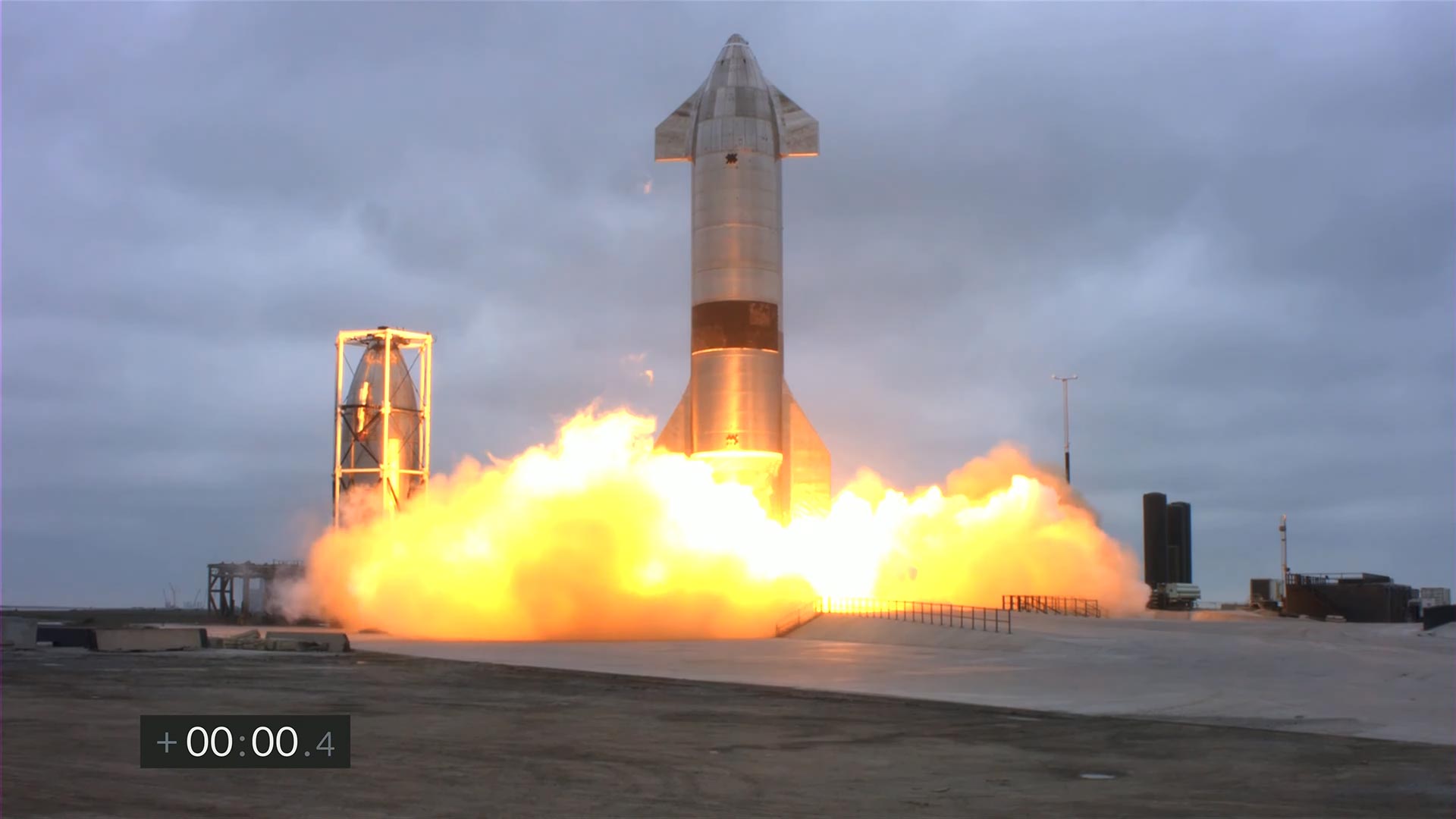
- SpaceX mounted the final of its first orbital-class Starship's six Raptor engines over the weekend, preparing the prototype for one or more record-breaking tests later this week.
- The next test on Starship 20's (S20) docket is tentatively slated for Monday, November 1st, between 10 a.m. and 6 p.m. CDT.
- Ship 20's next campaign, however, is more likely to result in the simultaneous igniting of all six Raptors, so completing the first real orbital-class Starship static fire.
- This includes Starship, which is planned to burn both sea-level and vacuum-optimized Raptors from launch to orbit.
Advertisement
By Friday morning, October 22nd, the Starship's two missing Raptor Center (RC) engines (of a total of three) had been installed. No testing was completed the following week for unclear reasons, and it took another six and a half days for SpaceX to send the final two missing engines to the pad for installation on S20. Regardless, both missing Raptor Vacuum engines were mounted at 2 a.m. CDT on Saturday, October 30th, marking the second time that all six Raptors have been placed on a Starship prototype.
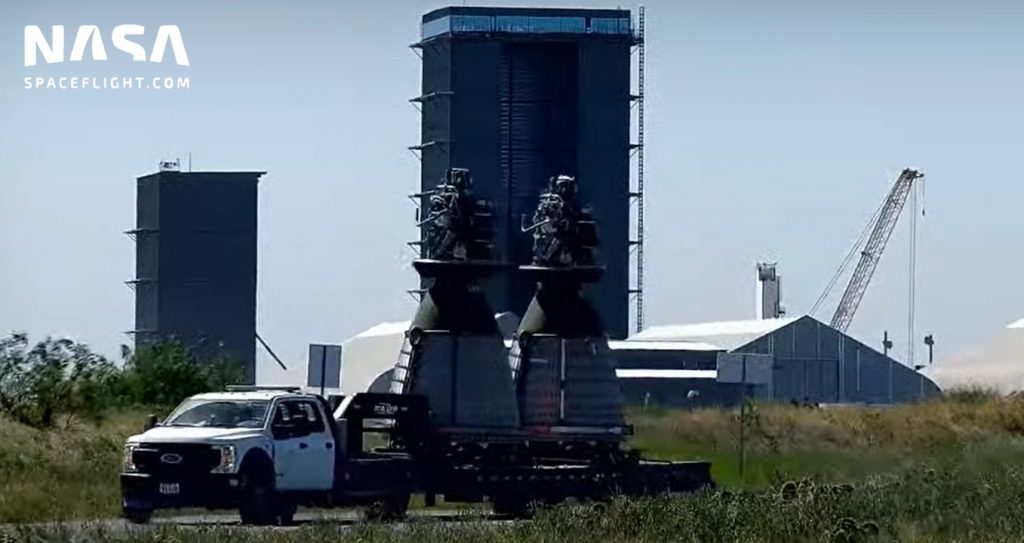
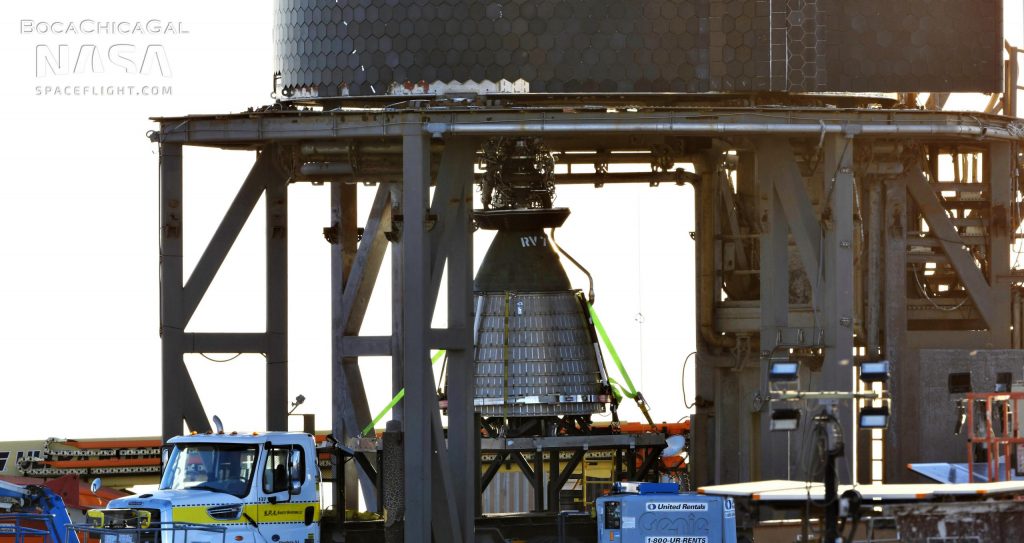
SpaceX deployed Starship S20's final two Raptor Vacuum engines on Friday and Saturday after they were delivered to the pad on Thursday, October 28th. bocachicagal (NASASpaceflight)
While this is the second time SpaceX has put six Raptors on a Starship, it is likely the first time six engines have been properly integrated with the propellant tanks, gas supply, and avionics on Ship 20. While SpaceX has not specified how it intends to continue, chances are that the next static fire test campaign for Starship S20 would involve concurrently lighting at least four of its six Raptor engines, setting a new record for the number of Raptors ignited simultaneously.
Ship 20's next campaign, however, is more likely to result in the simultaneous igniting of all six Raptors, so completing the first real orbital-class Starship static fire. As SpaceX has only recently begun to do with Falcon boosters, flight-proven Starships may eventually be exempt from preflight static fire tests, but it is almost certain that SpaceX will continue to proof test Starship and Super Heavy before flights until ships, boosters, and Raptors have stable designs and significant flight experience. Static fires will always be required to validate all installed engines in order to assure complete fidelity testing. This includes Starship, which is planned to burn both sea-level and vacuum-optimized Raptors from launch to orbit.
Advertisement
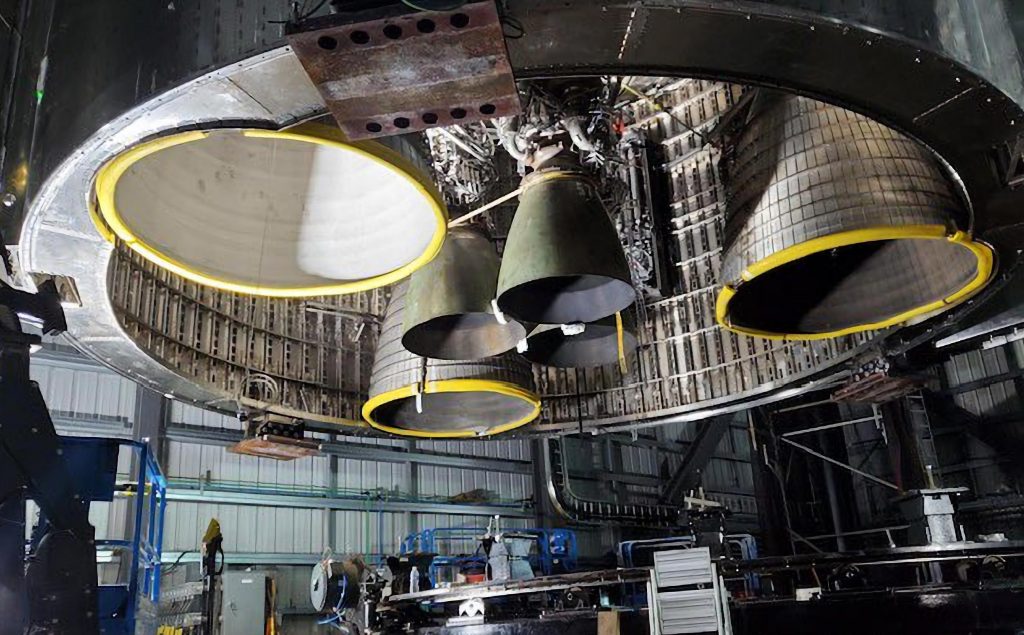
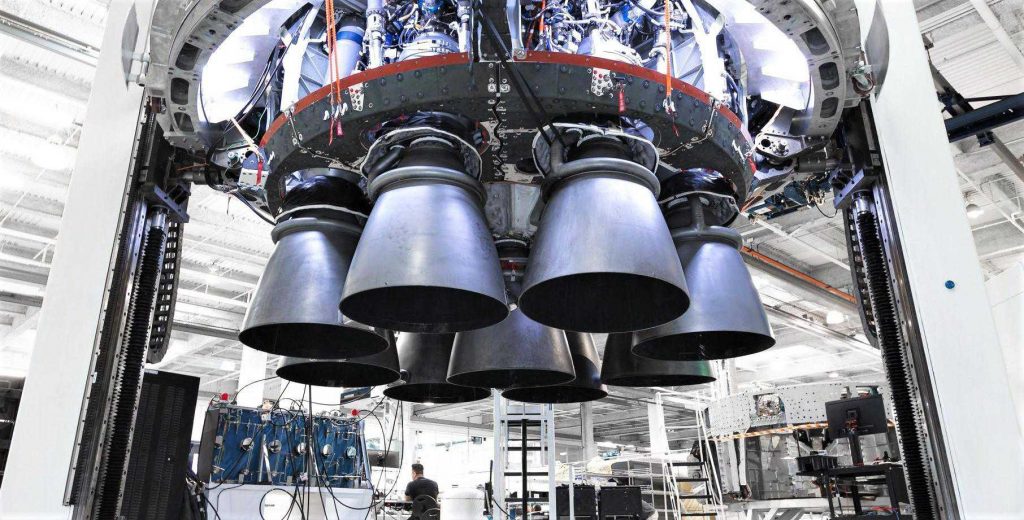
The Falcon 9's aft carries three engines compared to the Starship's six, but is only 40% as wide. (SpaceX)
At full throttle, Starship S20's six Raptor V1.0 engines might deliver 1100 tonnes (2.4 million lbf) of thrust, depending on the efficiency of its three RVacs at sea level. By comparison, SpaceX's workhorse Falcon 9 rocket generates about 760 tonnes (1.7 million lbf) of thrust at liftoff, implying that Starship will likely become the company's most powerful single-core rocket even if it never throttles above 70%.
There is a significant probability that SpaceX will begin the next round of Ship 20 testing by firing both sets of three Raptor Center and Vacuum engines independently, or by conducting a mixed three- or four-engine test following the last two-engine test. SpaceX might alternatively adopt a more iterative approach and test three, four, or five engines concurrently before performing the final six-engine test. Regardless, practically every static fire test that Ship 20 is currently designed to conduct will be a software 'first.' Keep an eye out for information on the first of those tests, which might begin as early as 10 a.m. CDT (15:00 a.m. UTC) on November 1st.
Advertisement